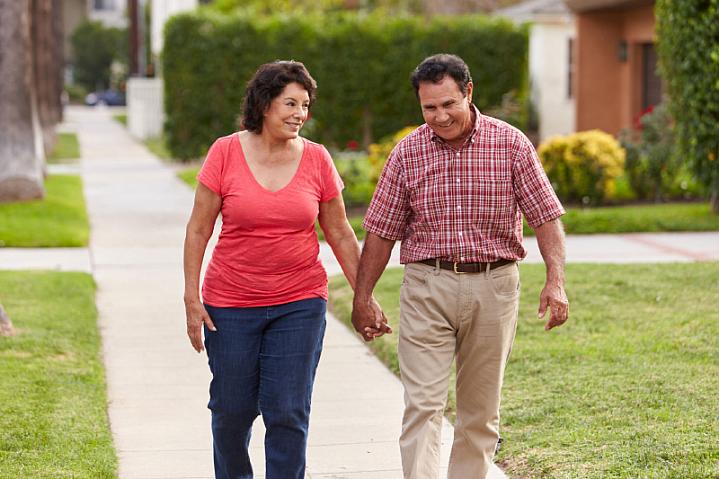UAMS Researchers Find that Better Access to Physical Activity Could Provide Boost for Rural Cancer Survivors
| FAYETTEVILLE — Cancer survivors in rural areas could benefit more from environmental opportunities to be active, according to researchers from the University of Arkansas for Medical Sciences (UAMS).
Researchers at the UAMS Institute for Community Health Innovation found that cancer survivors who lived in small- to medium-sized metropolitan areas that promoted walkability were more physically active than cancer survivors who lived in larger metropolitan areas or rural areas. UAMS researchers found that while 55% of study participants were insufficiently active, 63% of participants living in rural areas were not receiving enough physical activity in their daily routine.
Walkability refers to the degree to which a built environment, such as a neighborhood or city, promotes walking. This could include specified sidewalks or walking trails and curbing environmental barriers such as traffic or crime.
According to the Centers for Disease Control and Prevention (CDC), engaging in adequate amounts of physical activity after cancer treatment may allow survivors to respond better to treatments, can lower the risk of cancer recurrence or developing a new cancer, and can lower the risk of getting other diseases or illnesses, such as diabetes.
“Research has shown that sufficiently active cancer survivors have improved health outcomes and significantly better odds of reducing chronic health conditions,” said Pearl McElfish, Ph.D., director of the Institute for Community Health Innovation. “Increasing or improving infrastructure — like sidewalks and designated walking trails — can help promote physical activity among cancer survivors. An investment in active infrastructure is an investment in health.”
According to the Arkansas Department of Health, 41% of Arkansans live in rural areas that have higher incidence rates of cancers. Only 19% of Arkansas’s population reported meeting the CDC’s physical activity guidelines.
The study, Physical Activity among Cancer Survivors: Do Neighborhood Walkability and Metropolitan Size Play a Role?, was published by the Journal of Cancer Survivorship.
UAMS is the state’s only health sciences university, with colleges of Medicine, Nursing, Pharmacy, Health Professions and Public Health; a graduate school; a hospital; a main campus in Little Rock; a Northwest Arkansas regional campus in Fayetteville; a statewide network of regional campuses; and eight institutes: the Winthrop P. Rockefeller Cancer Institute, Jackson T. Stephens Spine & Neurosciences Institute, Harvey & Bernice Jones Eye Institute, Psychiatric Research Institute, Donald W. Reynolds Institute on Aging, Translational Research Institute, Institute for Digital Health & Innovation and the Institute for Community Health Innovation. UAMS includes UAMS Health, a statewide health system that encompasses all of UAMS’ clinical enterprise. UAMS is the only adult Level 1 trauma center in the state. UAMS has 3,485 students, 915 medical residents and fellows, and seven dental residents. It is the state’s largest public employer with more than 11,000 employees, including 1,200 physicians who provide care to patients at UAMS, its regional campuses, Arkansas Children’s, the VA Medical Center and Baptist Health. Visit www.uams.edu or uamshealth.com. Find us on Facebook, X (formerly Twitter), YouTube or Instagram.###
